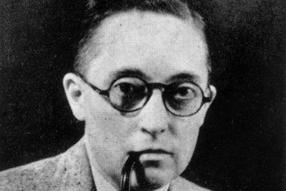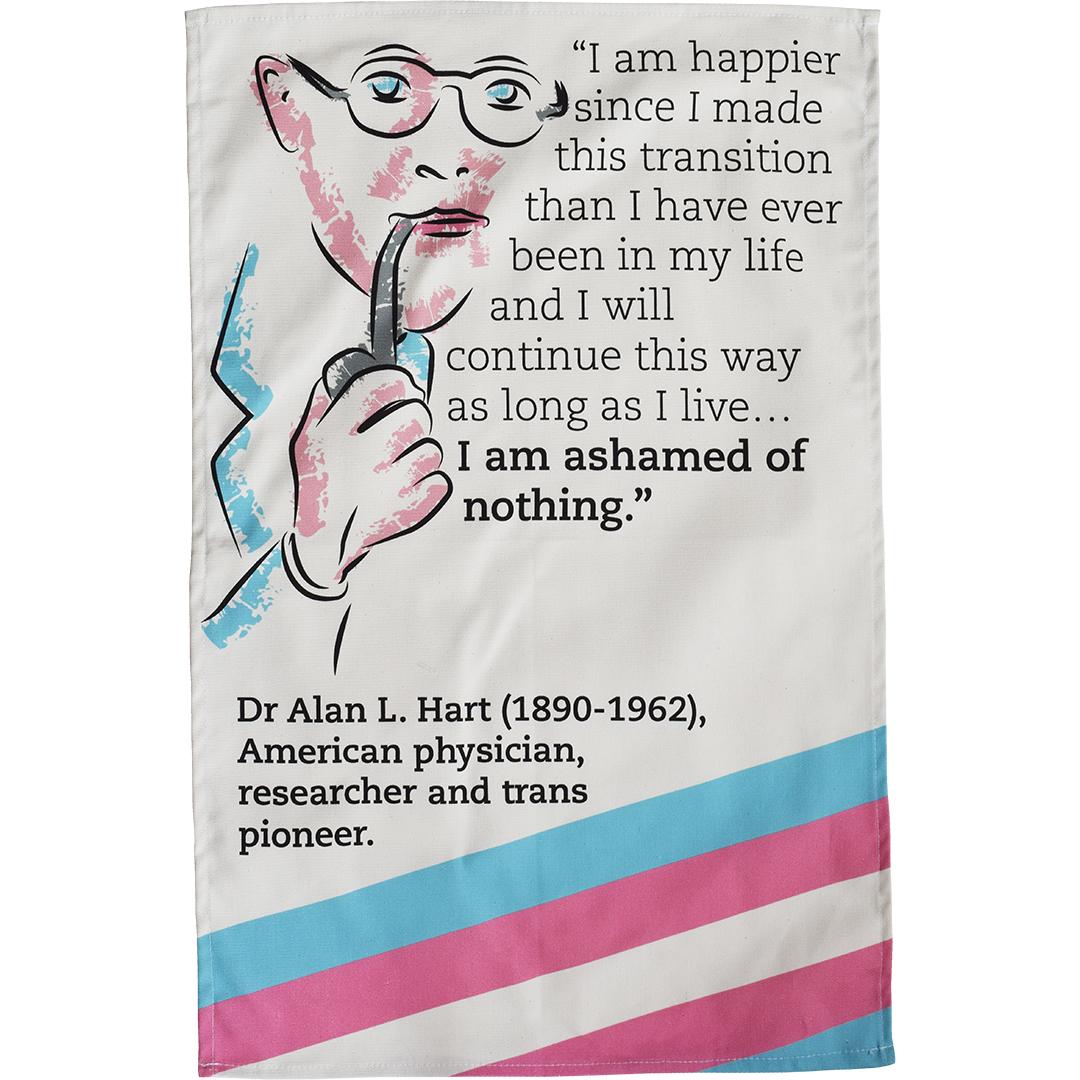Ashamed of Nothing: The Life and Legacy of Alan L. Hart
Posted by Tom on 24th Aug 2022

He may not be a household name, but Alan L. Hart was a pioneer in more ways than one
John Keats. Eugène Delacroix. Emily Brontë. Andrew Jackson. If you died in bed in the nineteenth century, the chances are that it was tuberculosis that killed you.
Even into the twentieth century, tuberculosis was one of the world’s biggest killers. But thankfully, by the 1950s, TB mortality rates in Europe had fallen by 90%.
This dramatic fall in mortality is due, in part, to the work of a man you’ve probably never heard of before: Dr Alan L. Hart.
Our brand new Alan L. Hart tea towel, out now on our website
Click to view our Alan L. Hart tea towel
Hart’s scientific work alone is enough to earn him an important place in world history. But Hart was also transgender, and was one of the first trans men to undergo a documented transition in the United States.
A pioneer and icon in more ways than one, we’re celebrating his legacy on our brand new tea towel.
Born in Kansas in October 1890, Hart was assigned female at birth with the name Alberta Lucille.
But from an early age, he presented as male and played exclusively with boys’ toys. And though treated as a girl in school, Hart spent the holidays at his grandfather’s farm, presenting as male among his male friends.
According to the Halls Summit News:
"Young Hart was different, even then. Boys' clothes just felt natural. Hart always regarded himself as a boy and begged his family to cut his hair and let him wear trousers."
During his school years, Hart began writing under the male name Robert Allen Bamford Jr. This was the name he used in the local newspaper, as well as in school and college publications.
By 1912, Hart had graduated from Albany College, and he obtained a medical degree from the University of Oregon in 1917.
It was around the time that he graduated from Oregon that Hart underwent his medical transition: a full hysterectomy, after which he legally changed his name from Alberta to Alan.
Though reassignment surgeries had been carried out earlier in Germany, Hart was the first trans man to undergo a documented hysterectomy in the US.
As they say, there's no LGB without the T
Click to view our LGBTQ+ tea towel
Despite the success of the operation and transition, life was still incredibly difficult for Hart.
Everywhere he went, he was outed as transgender by people who recognised him from before his transition, and he was forced to move from place to place until he could go unrecognised.
The relocations, financial insecurity and secrecy placed a strain on Hart’s marriage, and his wife of five years left him in September 1923.
After several years of working as a physician in states across the West, Hart remarried and moved to New York in 1925.
There, he turned his attention to medical research, working at the Trudeau School of Tuberculosis and eventually being appointed Director of Radiology at Tacoma General Hospital in Washington state.
Things were looking up.
During the 1920s and 30s, he became an expert on tubercular radiology and published several articles on X-ray medicine and its use in the detection of tuberculosis.
This was Hart’s major contribution to medical science. Because tuberculosis presented no symptoms in its early stages, X-ray screening was invaluable for early detection, isolation and treatment.
Over the course of the 1930s and 40s, Hart’s screening methods saved millions of lives. To this day, the compendium of his tubercular radiology research is a standard medical textbook.
For most people, this probably would have been enough. But during this time, Hart was also a prolific novelist alongside his medical practice and research.
He published four novels during his life, all of which focus on medical characters and semi-autobiographical themes.
His second novel, for instance, told the story of a gay physician named Sandy Farquar who is repeatedly harassed and tormented because of his sexuality.
Farquar considers himself to be ‘the possessor of a defective body’ from which he wishes to escape, echoing Hart’s own experiences of gender dysphoria.
After WW2, synthetic testosterone became available in the US, which meant that Hart could finally grow a beard and shave. He also developed a deeper voice, which made him more confident in public interactions.
In the final years of his life, Hart gave numerous medical lectures and fundraised for people suffering with tuberculosis. He died in July 1962 of heart failure.
Despite the trouble he faced in a transphobic society, Hart’s story is one of courage and joy. As he said himself concerning his transition:
“I am happier since I made this change than I have ever been in my life, and I will continue this way as long as I live… I am ashamed of nothing.”
Political commentators talk a lot about the ‘transgender issue’ as something unique to our times.
But trans people aren’t an ‘issue’ to be dealt with, and they’ve existed in various cultures since at least ancient times: from priests in Ancient Greece and Phrygia, to the Roman emperor Elagabalus.
In the twentieth century, Hart saved thousands of lives with his ground-breaking scientific research. And today, his legacy as a transgender man continues to inspire people across the globe.
We're proud to celebrate his life and work with our brand new tea towel!


